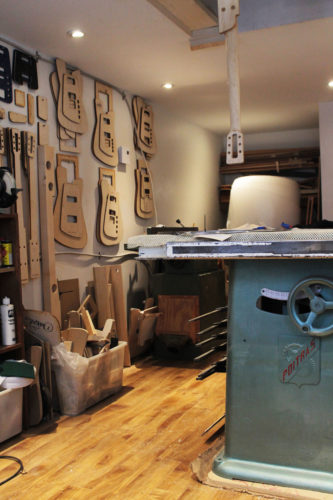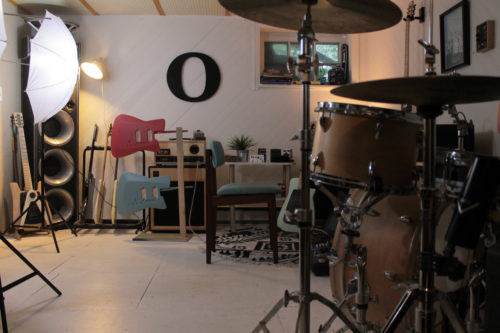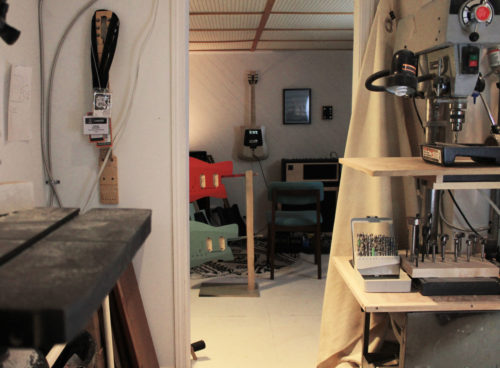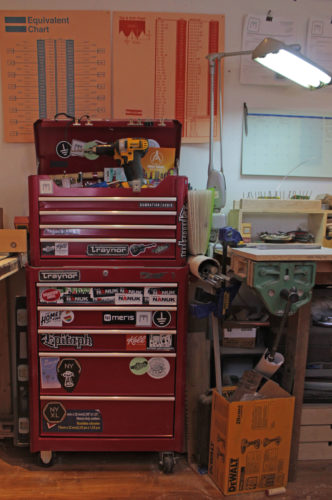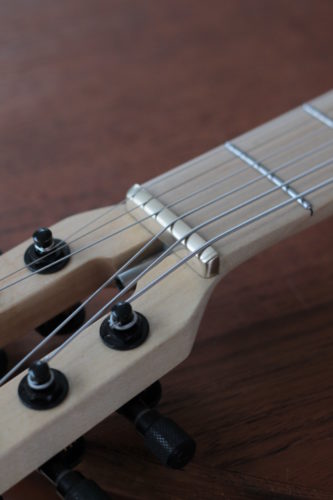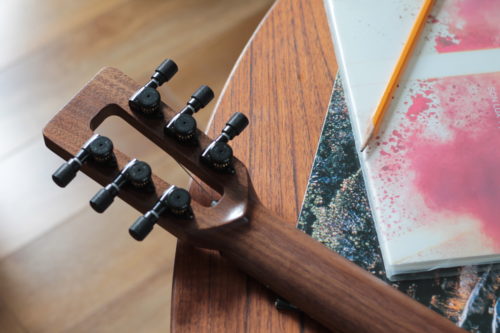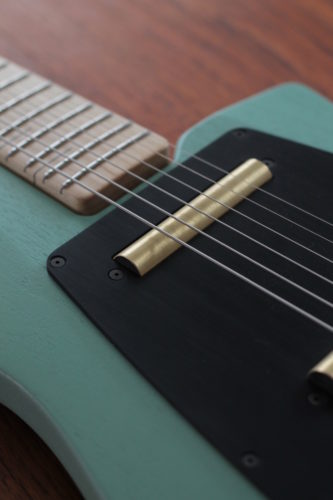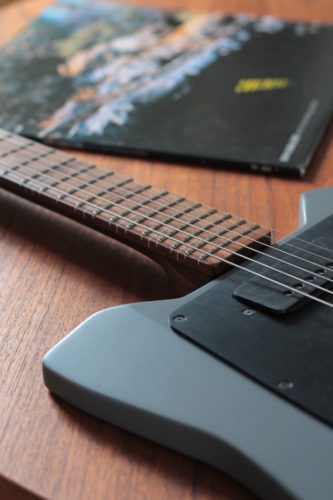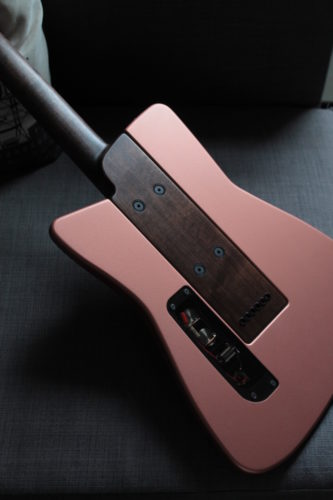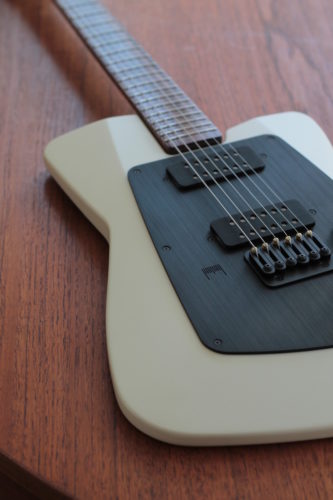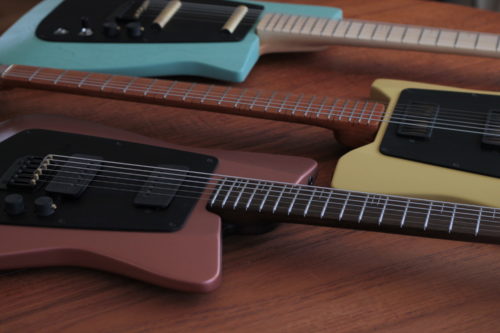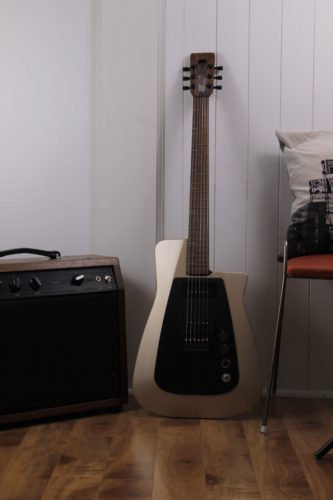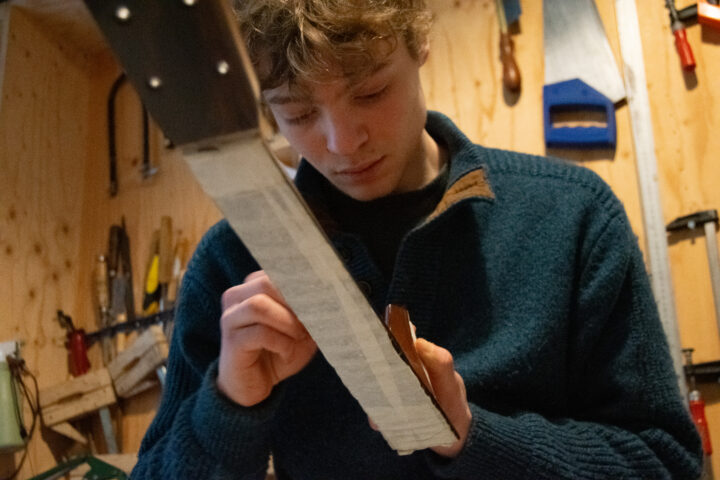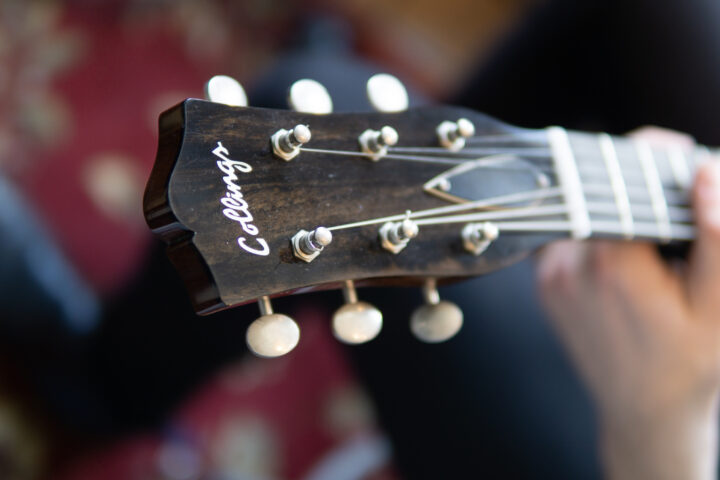Sometimes it seems like guitar show season was made for Instagram. And, thanks to the Holy Grail and La Conner shows, our feed has been stuffed to the gills with all manner of re-grammable guitar porn, ranging from new creations by old favorites to a whole slew of fresh revelations. Those revelations are a huge part of what we love about this Instagram/guitar show sweet spot, not the least because it’s where we found the latest subject for our Bench Press column, Florian Bouyou of Millimetric Instruments, a builder of eye-catching, innovative but simple electric guitars based in Montréal.
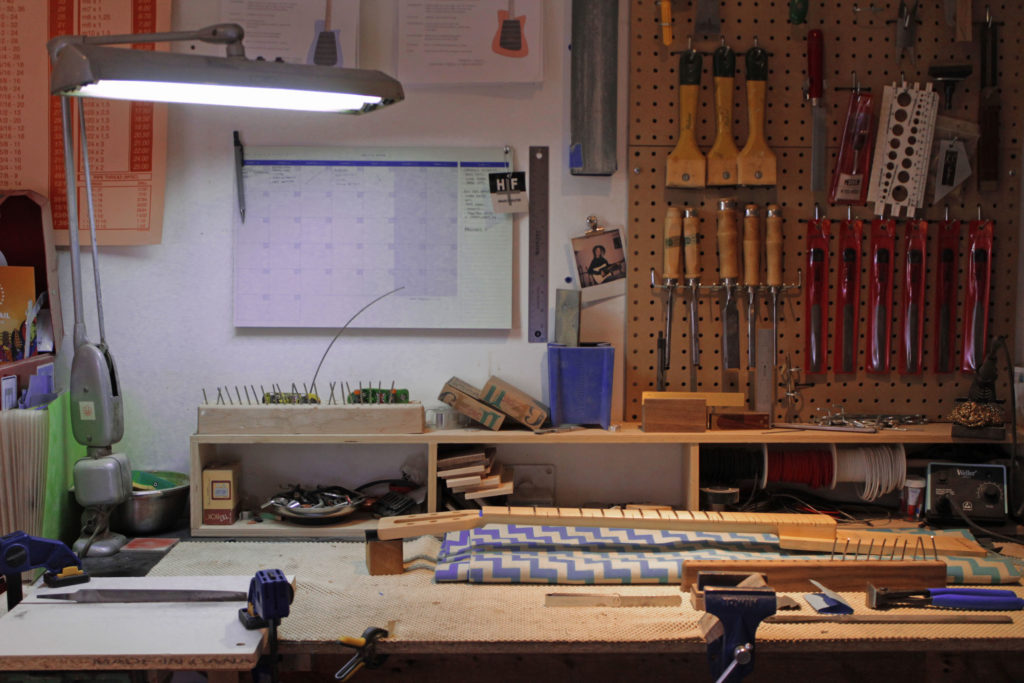
Fretboard Journal: What’s on your bench right now?
Florian Bouyou: I’m currently preparing two guitars for paint, both MGS3 offsets models, one milk paint Fiesta Red and the other one milk paint blue/grey. I’m also finish-sanding the necks for Livos oil. After that it will be time to prepare the frets–I shape them before pressing them, that way I can oil the neck without having to worry about oil gooping up around the frets.
FJ: How did you get started?
FB: I started building guitars out of necessity; I wanted to achieve that Steve Albini sound in his bands Shellac or Rapeman. I learned about the Travis Bean guitars he was using. So 10 years ago I went to cabinet making school. I got denied at the lutherie program, which I now see as a good thing! I started making guitars around my third year of school; I made a first prototype for what is now my MG6, heavily influenced by another aluminum guitar brand called Obstructures and also Travis Bean. After a few years of building guitars, cabs and pedalboards I started getting more and more orders and it’s now my full-time job.
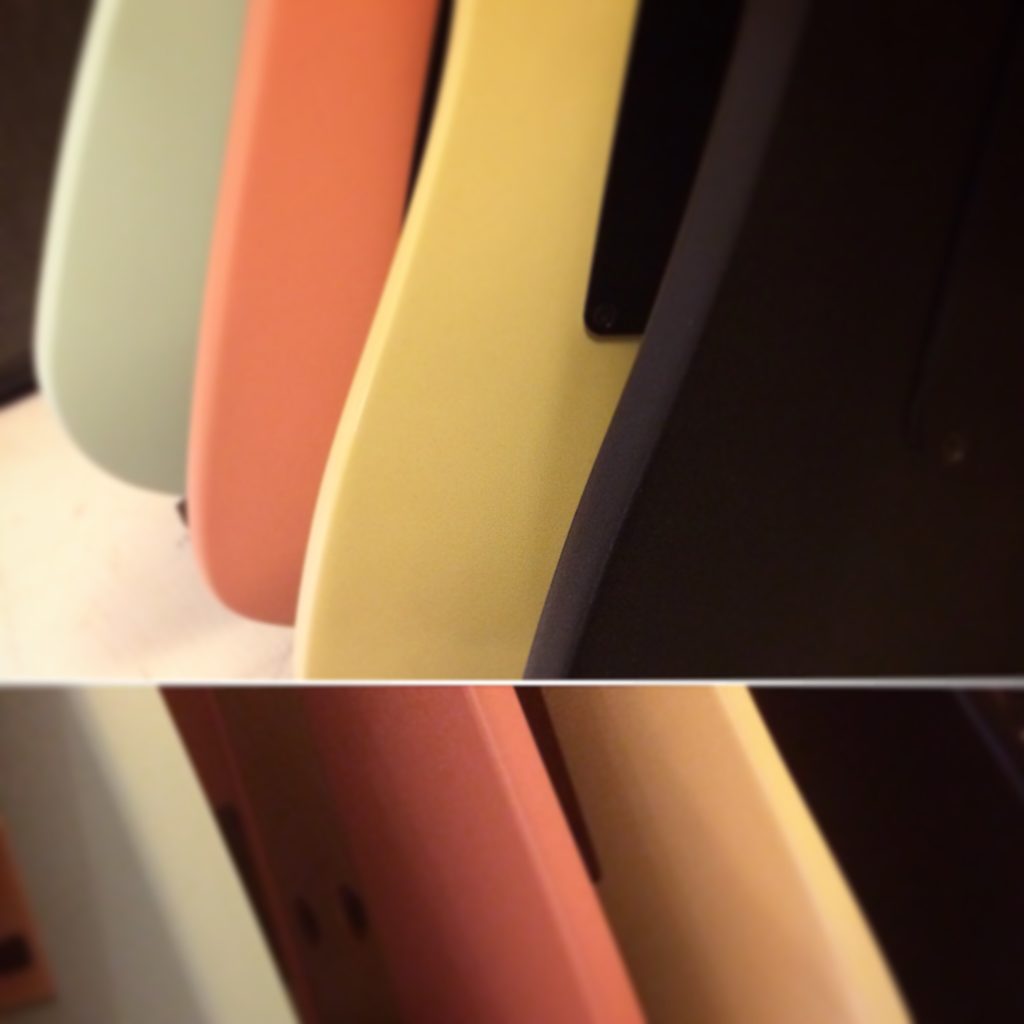
FJ: Where do you find inspiration?
FB: Most of my influences comes from outside the guitar world, mostly industrial design and architecture. The biggest influences would be Jean Prouvé, Dieter Rams, The Bauhaus and Scandinavian design in general. I love colors from the ’50s and ’60s, faded pastels and other muted colors. During my recent trip to Berlin, I fell in love with those vintage buildings’ colors from the Neuköln neighborhood. I like simple things that don’t look fancy–to me a guitar is a tool, not an art piece with super fancy and flashy finish. Luthiers like to show off their skills; I prefer to build quality and clean-looking instruments.
FJ: Do you have a favorite guitar that’s crossed your bench?
FB: I rarely take repairs in, so I don’t have much other guitars that end up on my bench, but after the Holy Grail Guitar Show in Berlin I traded one of my guitars with my friend and co-host of our podcast [In The Making], Nicolaï Schorr. It’s called the Owl and it’s super original and beautiful, with a sliding pickup system and very ingenious adjustable neck joint. Apart from that, I love my old Silvertone 1451, simple and efficient.
FJ: Can you tell us about your shop?
FB: For two years now, I’ve been lucky enough to have my own shop in the basement of my house. It’s small but very practical. I was sharing a 1500 square foot shop before and I was always looking for my tools. Now all my tools are within reach. It’s a 10′ x 22′ space that revolves around my two table saws and inversed router table. I have a bench for setups and assembly, a few other tools around the perimeter of the shop–everything has to be well-organized or it can become a real mess. As I like to say now, clean shop makes a clean build, and a clean build is a happy build.
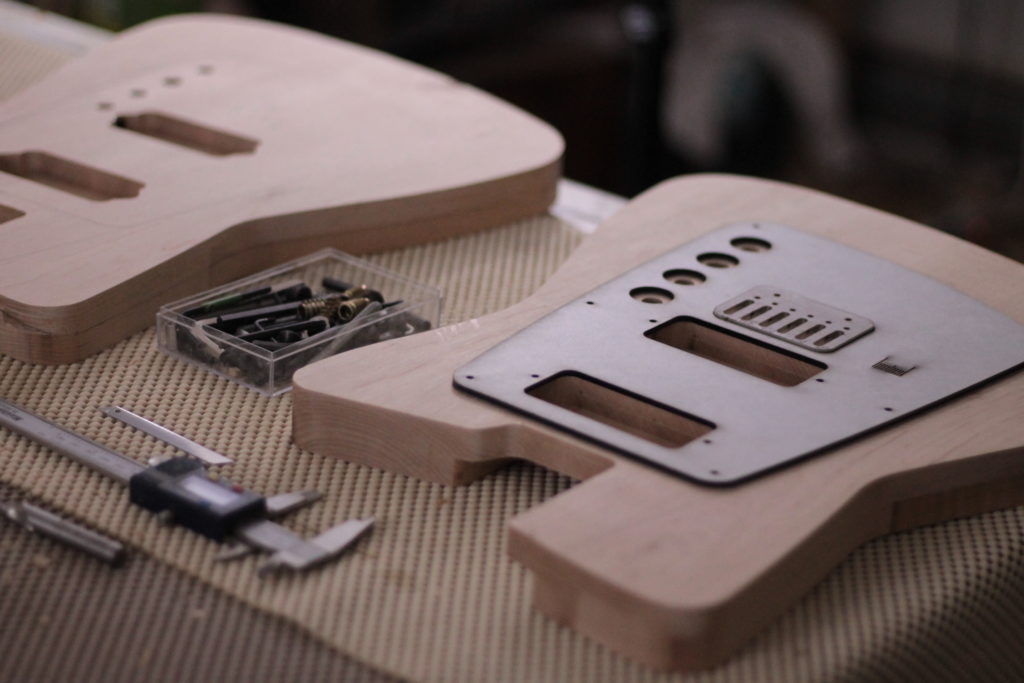
FJ: Do you have a particular philosophy about wood/materials? How much is manufactured in-house?
FB: I try to make everything in-house with as many local materials as possible. I refuse to use exotics and tropical woods, or any so called “green woods,” like bamboo. Materials that come from other countries need to travel and that’s a big no for me. My guitars are mostly made from maple, walnut and cherry. I may try Richlite in future builds–it’ll be very interesting to match to other woods, as it’s perfectly black. I have a rule to never use two different colored woods on one guitar.
The only thing I don’t make in house are the tuners, the bridges and pickups. MJS from Toronto winds my bobbins. I usually do the final work. I like to make original things and that stands for pickups and hardware as well. Tuners are, unfortunately, very hard to make, but maybe one day…
FJ: Can you tell us the story behind the “ambidextrous” design of your MG6 model?
FB: The MG6 is the first guitar I designed. It is heavily influcenced by the work of Matt, Nate and Brian at Obstructures. I like originality and wanted my first build to be something different. I liked their design a lot but I made it my own by making it a bit less “brutal” and mixing in a few vintage influences like the Gibson Ripper/G3 and L6S design. It has been refined more and more over the years and it’s still my favorite instrument to play.
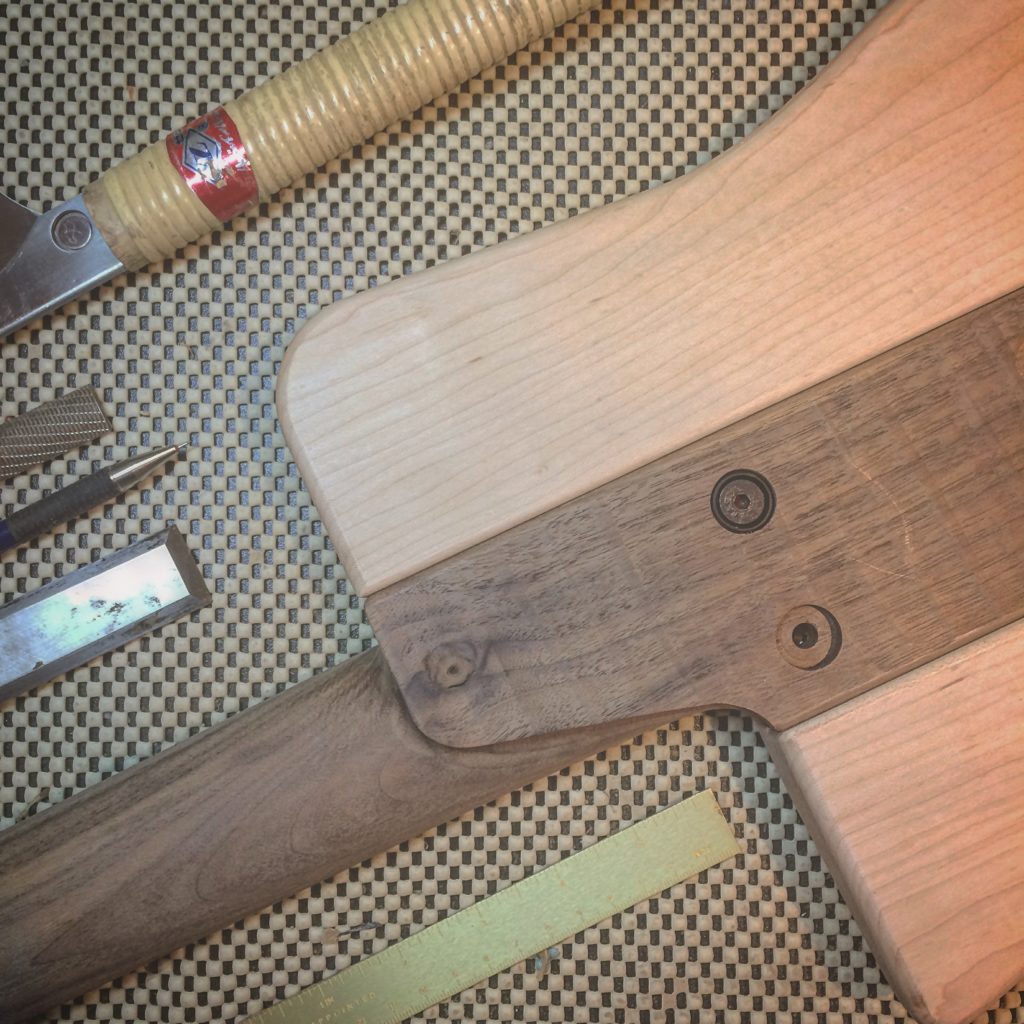
FJ: Your neck is unusual as well…
FB: The neck design is, again, influenced by Travis Bean and all that aluminum neck scene: more body/neck contact, the fact that the string goes through the body and neck, all that makes a more solid guitar. But it also made it easier to design more simple body shapes, as the need for a bulky neck pocket disappeared. It makes heel design easier, simple and graceful.
FJ: Can you tell us a little more about your pickups and hardware?
FB: There is not much info on my website about my pickups because I don’t sell them separately, but they are all designed in-house in collaboration with Mike at MJS. I usually come up with an idea or type of sound or feel and he points me to where we should go. I’m very proud of my new MMLS, my take on the classic lipstick pickup, it works wonderfully and I can’t wait to use them more in upcoming builds. The pickup line-up includes a humbucker for people who don’t like humbuckers (MMHB), a single-coil based on the Travis bean TB500 pickup to really mimic those Steve Albini tones (MM90 and MM90Z) and also our version of the popular Gold Foil pickups (MMGF).
The bridge design came about because I was very frustrated with the bridge I used to use. It was very hard to match a pickguard to it and I always find the act of using an off-the-shelf bridge a bit too easy. I want to make guitars, not parts-casters. I wanted a simpler design that was easy to produce and did not require CNC work (they are laser cut).
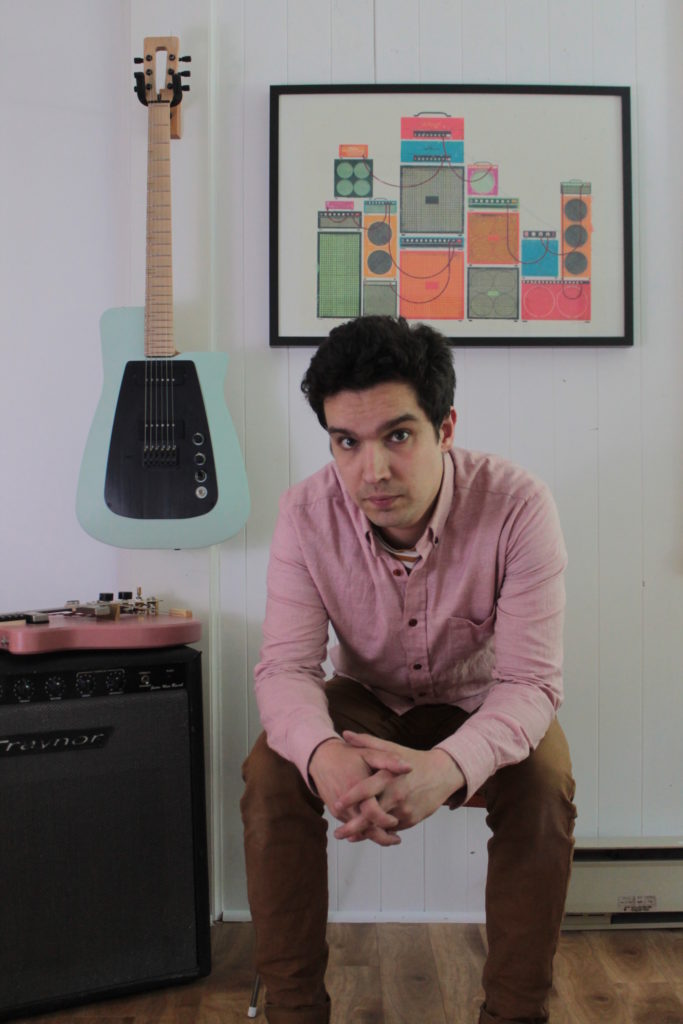
FJ: Are there any upcoming projects that you’re particularly excited about?
FB: I’m currently working on my own vibrato/bridge design. I’m very excited to try the first prototype in the coming weeks–this is been in the works for a year now and I think it will work nicely. I’m also finishing the 3-D model of my first acoustic guitar, which I may start to build in 2019. This is a big step for me; there is much to be done in acoustic guitar design, I think.
On another side, I organize the Sonore Festival with a few other people. It’s a new guitar show in Montréal, and we are super excited about the second edition with a bigger venue and even more exhibitors. This year the dates are September 21st to 23rd, at the Agora Hydro Quebec in Montréal. There will be acoustic and electric guitars as well as boutique pedals and tube amplifiers, including builders like Healy Guitars, Jean-Yves Alquier, Nicolaï Schorr, Empress Effects, The Montreal Assembly and many, many other talented exhibitors.
